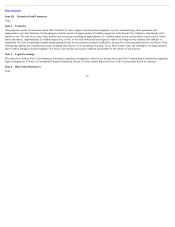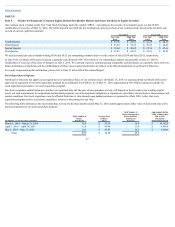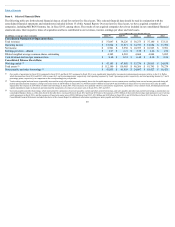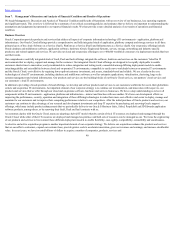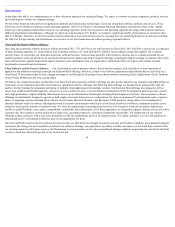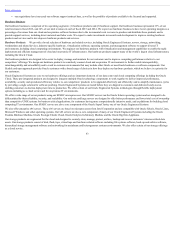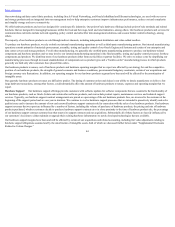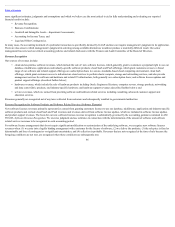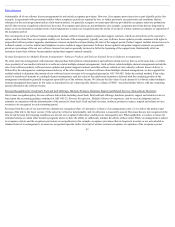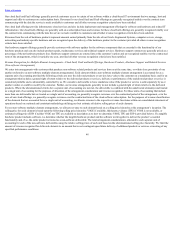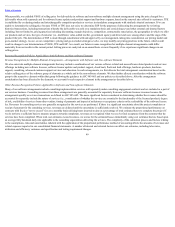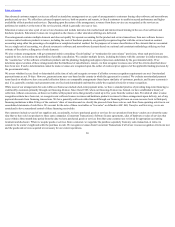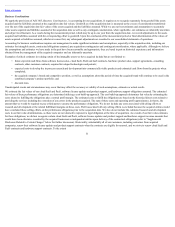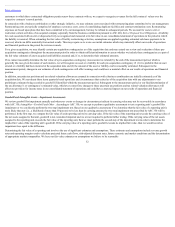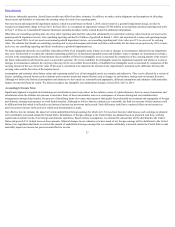Oracle 2015 Annual Report Download - page 47
Download and view the complete annual report
Please find page 47 of the 2015 Oracle annual report below. You can navigate through the pages in the report by either clicking on the pages listed below, or by using the keyword search tool below to find specific information within the annual report.
Table of Contents
Services Business
Our services business, which represented 9% of our total revenues in each of fiscal 2016 and 2015, respectively, and 10% of our total revenues in fiscal 2014, is
comprised of the remainder of our operating segments. Our services business has lower margins than our cloud and on-premise software and hardware businesses.
Our services revenues are impacted by our strategy for and the competitive position of our services, certain of our acquisitions, general economic conditions,
governmental budgetary constraints, personnel reductions in our customers’ IT departments, tighter controls over discretionary spending, our strategic emphasis on
growing our cloud revenues and the growth in our software and hardware offerings. Our services business’ offerings include:
• consulting services that are designed to help our customers and global system integrator partners more successfully architect and deploy our offerings,
including IT strategy alignment, enterprise architecture planning and design, initial software implementation and integration, and ongoing software
enhancements and upgrades. We utilize a global, blended delivery model to optimize value for our customers and partners, consisting of on-premise
consultants from local geographies, industry specialists and consultants from our global delivery and solution centers;
• advanced customer support services, which are provided on-premise and remotely to our customers to enable increased performance and higher
availability of their Oracle products and services and also include certain other services; and
• education services for Oracle products and services, including training and certification programs that are offered to customers, partners and employees
through a variety of formats, including instructor-led classes at our education centers, live virtual training, self-paced online training, private events and
custom training.
Acquisitions
A selective and active acquisition program is another important element of our corporate strategy. In recent years, we have invested billions of dollars to acquire a
number of complementary companies, products, services and technologies, including MICROS Systems, Inc. (MICROS) in fiscal 2015.
We believe our acquisition program strengthens our competitive position, enhances the products and services that we can offer to customers, expands our customer
base, provides greater scale to accelerate innovation, grows our revenues and earnings and increases stockholder value. We expect to continue to acquire
companies, products, services and technologies in furtherance of our corporate strategy. Note 2 of Notes to Consolidated Financial Statements included elsewhere
in this Annual Report provides additional information related to our recent acquisitions.
We believe that we can fund our future acquisitions with our internally available cash, cash equivalents and marketable securities, cash generated from operations,
additional borrowings or from the issuance of additional securities. We estimate the financial impact of any potential acquisition with regard to earnings, operating
margin, cash flow and return on invested capital targets before deciding to move forward with an acquisition.
Critical Accounting Policies and Estimates
Our consolidated financial statements are prepared in accordance with U.S. generally accepted accounting principles (GAAP) as set forth in the Financial
Accounting Standards Board’s (FASB) Accounting Standards Codification (ASC), and we consider the various staff accounting bulletins and other applicable
guidance issued by the U.S. Securities and Exchange Commission. GAAP, as set forth within the ASC, requires us to make certain estimates, judgments and
assumptions. We believe that the estimates, judgments and assumptions upon which we rely are reasonable based upon information available to us at the time that
these estimates, judgments and assumptions are made. These estimates, judgments and assumptions can affect the reported amounts of assets and liabilities as of
the date of the financial statements as well as the reported amounts of revenues and expenses during the periods presented. To the extent that there are differences
between these estimates, judgments or assumptions and actual results, our financial statements will be affected. The accounting policies that reflect our
45



